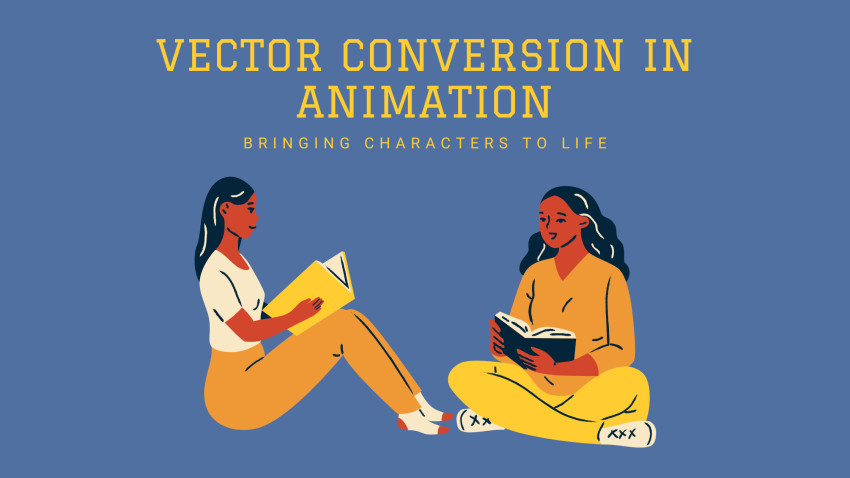
Introduction:
With the development of vector conversion, the art of animating characters has undergone a revolutionary change in the dynamic field of animation. This creative method has many advantages for animators and creators in addition to improving animated figures' aesthetic appeal. We'll go into the interesting world of vector conversion in this blog, talking about its importance, how it works, and how it affects the animation business.
Understanding Vector Conversion in Chapter 1
A crucial step in the digital world is vector conversion, which is turning raster images into vector graphics. Vector graphics are scalable and adaptable, offering animators a more flexible platform than pixel-based visuals. Discover the fundamentals of vector conversion and how it creates the framework for dynamic character animation.
Chapter 2: Animation's Advantages of Vector Conversion
Discover all of the benefits that vector conversion offers to the animation industry. Discover how this method improves editing capabilities, scalability, and flexibility while streamlining the animation process to produce visually attractive and fluid character movements.
Chapter 3: The Process of Converting Vectors
Explore the nuances of vector conversion. Recognize each stage of the process, from tracing and converting raster pictures into vector drawings to choosing the appropriate software tools. Learn about the finest approaches and pointers for getting the best animation effects possible for characters.
Chapter 4: Improved Expressiveness and Detailing
Examine the ways in which vector conversion improves the expressiveness and detailing of characters. Explore case studies that demonstrate how this method gives animators the ability to accurately and remarkably depict emotions and complex traits, bringing characters to life on screen.
Chapter 5: Success Stories of Vector Animation
See actual case studies of successful vector animation. Discover the ways that well-known animation studios and indie producers have used vector conversion to improve their work, draw in viewers, and carve out a position for themselves in the cutthroat animation market.
Chapter 6: Overcoming Vector Animation Difficulties
Although vector conversion has many benefits, there are drawbacks as well. Examine typical obstacles animators encounter and solutions for them. Learn how to navigate the challenges of vector animation, from file size concerns to striking a balance between performance and intricacy.
Chapter 7: Innovations and Trends for the Future
Examine vector animation's future. Discover cutting-edge ideas and trends that are going to change the game. Learn about the changes occurring in the animation industry and what they represent for content creators and animators, from the introduction of artificial intelligence to the development of vector conversion technology.
Final Thoughts: Adopting the Vector Revolution
Emphasize the transforming impact of vector conversion in animation to close out the blog. Provide a brief summary of the main conclusions, emphasizing the importance of this approach in expanding the realms of animation's inventiveness and narrative.




